Docgeni 2.0 发布,开启自动化
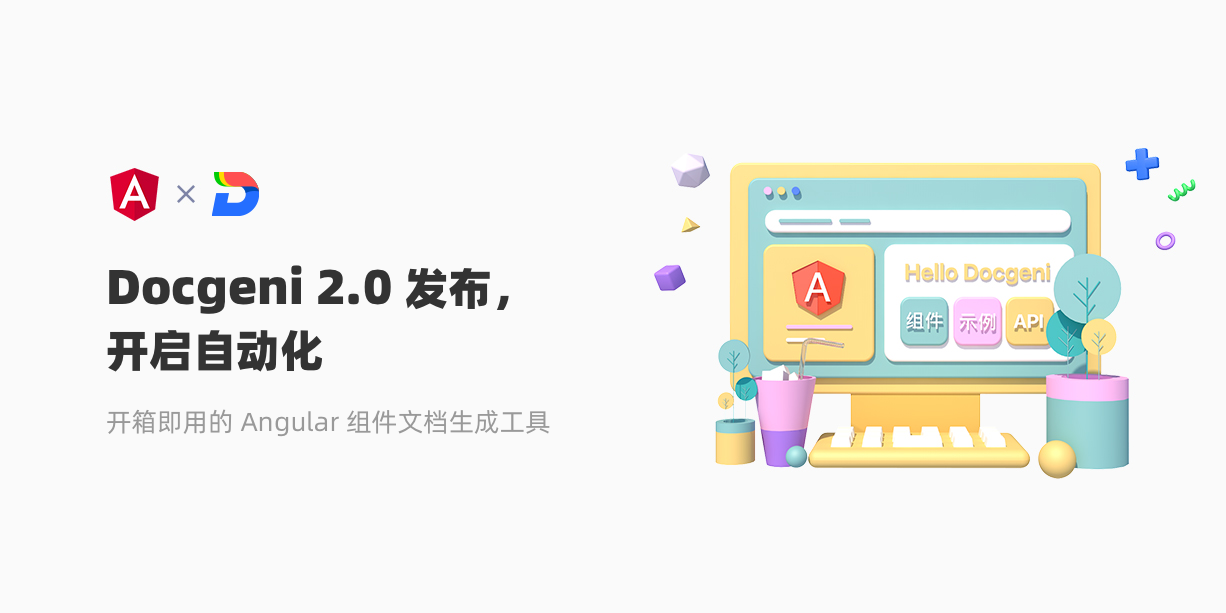
作者:徐海峰
背景
2021 年的 5 月 20 日, Docgeni 正式对外宣布开源: Docgeni,开箱即用的 Angular 组件文档工具 ,4 个月后, Docgeni 1.1.0 版本的发布 ,时隔一年多,中间发布了无数个 next 版本,今天终于迎来 2.0 的正式发布 ,其中的心酸只有做过开源项目的人最有体会,因为业务的压力,只能偶尔抽空写写代码。
如果你还没有关注 Docgeni,可以访问 https://github.com/docgeni/docgeni Star ,你的 Star 是对开源项目最大的鼓励。
Docgeni 自发布之日起为了快速让我们的组件库使用,所以很多特性对于当时来说采用了最快速最简单的设计,那么自 v1.1.0 发布后很多高级功能都已经补全了(比如:搜索、自定义首页、目录、自定义组件等等),之后从 2021 年 Q4 开始也逐渐开启了自动化之路,那么以下分别介绍一下那些自动化的新特性。
示例模块和组件自动生成
Docgeni 过去的版本中: 示例模块和示例组件必须手动编写且按照约定的规则命名 。
假设组件库有一个按钮组件,它有两个示例,分别为: basic 和 advance ,Angular 所有的组件需要定义在一个特性模块上,所以需要在组件示例根目录新建一个 module.ts :

需要遵循如下规则:
文件名需要按照约定的规则定义,其次对于示例组件
basic 和advance来说,组件命名规则为:类库缩写+组件名+示例名+ExampleComponent(假如类库为 alib,组件为 button,最终这两个示例组件命名必须为:AlibButtonBasicExampleComponent和AlibButtonAdvanceExampleComponent )。module.ts 中的模块命名规则为:
类库缩写+组件名+ExamplesModule,最终的模块命名为:AlibButtonExamplesModule
对应的 module.ts 和示例组件的代码如下:
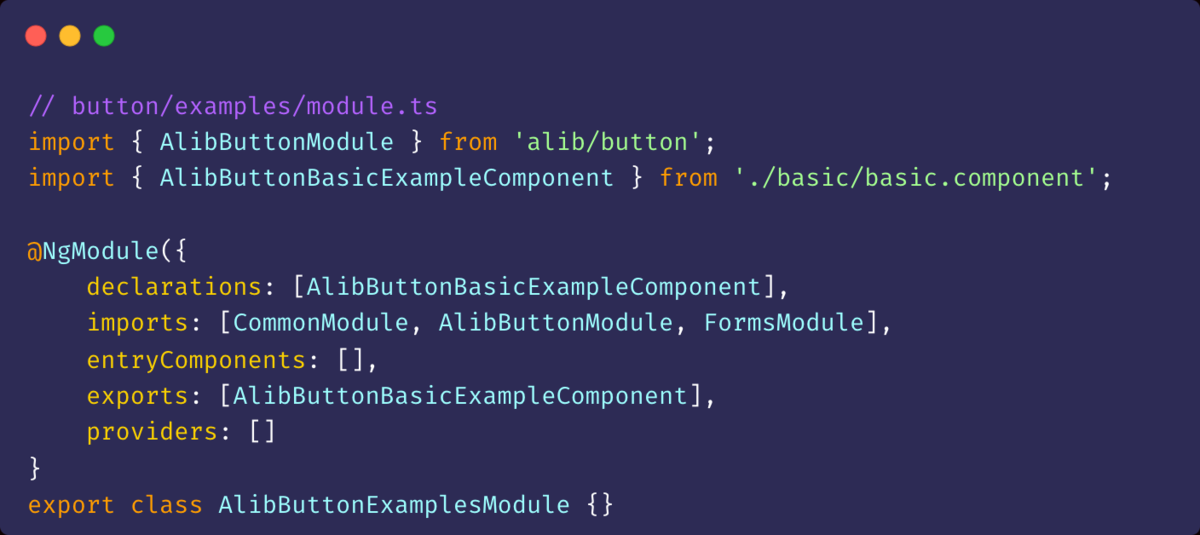

为什么需要按照约定的规则命名呢?因为示例组件渲染是动态的,需要知道导出的模块名和组件名,过去这样做的问题有:
需要时刻记住命名规则,一旦报错需要看文档(但是考虑到大多数场景都是复制其他示例过来改一下名字也还好)
对于
AlibButtonExamplesModule 来说需要在 declarations 中显示声明所有的示例组件,比较繁琐,每加一个示例就要操作一次
在 2.0 版本中 Docgeni 会读取当前组件模块下的所有示例组件,然后动态创建示例模块,对于示例模块来说需要自定义 imports 和 providers,需要新增一个 module.ts, export default {} :

同时为了兼容之前的版本,最终出现三种情况:
当 module.ts 有 NgModule 定义时不做任何转换,以用户定义的模块为主
当 module.ts 无内容时生成一个
AlibButtonExamplesModule并把所有示例组件加入到声明中当 module.ts 有
export default { imports: [] ...} 时动态在底部生成一个AlibButtonExamplesModule并把 default 相关的声明加上,同时把所有示例组件也加上
简单一张图表示如下:
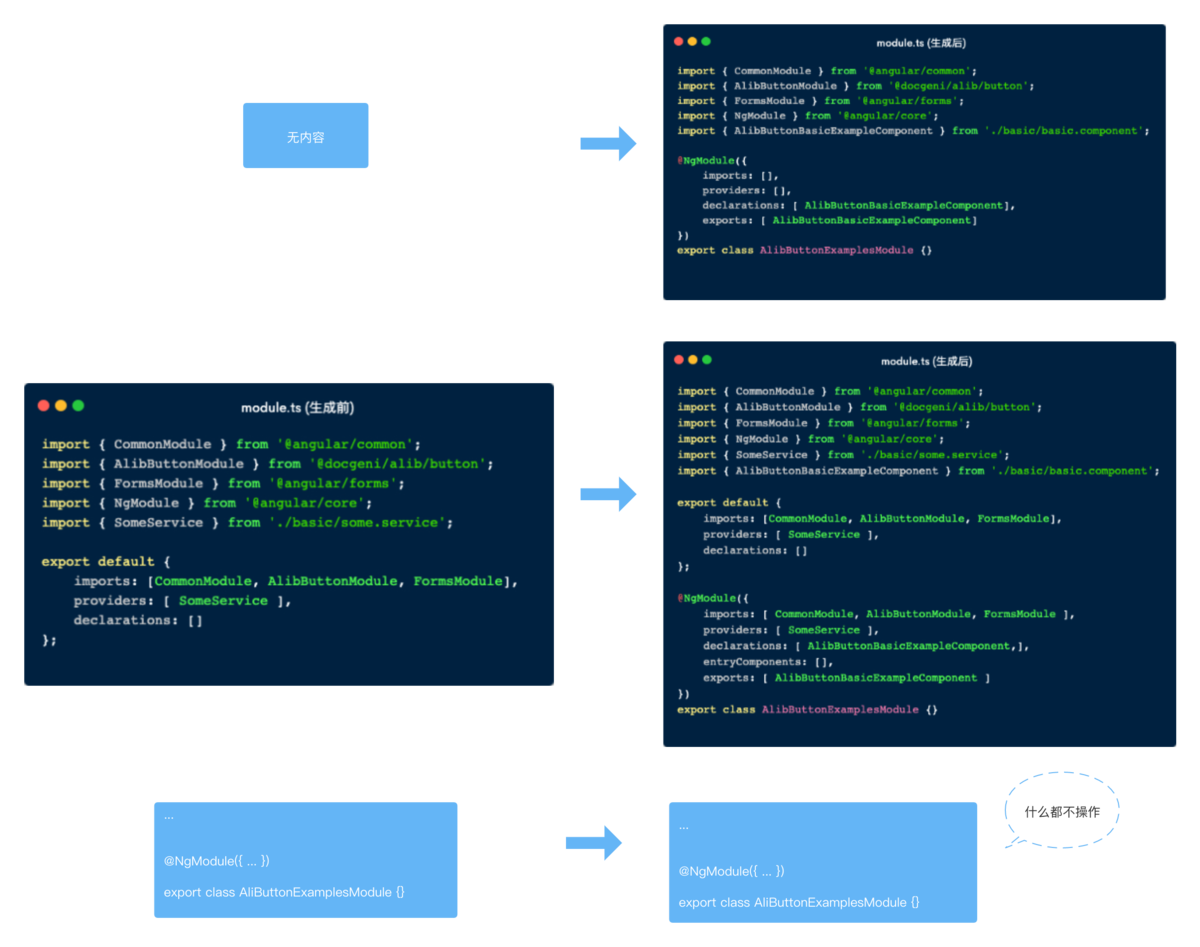
合并生成 NgModule 内部流程为:
通过 TypeScript 的 Compiler-API 实现 AST 语法树的解析,主要是获取到示例组件和示例模块的文件内容,手动创建一个
ts.SourceFile,sourceFile 就是 TypeScript 的 AST 语法树通过
ts.forEachChild获取到导出的 ClassDeclaration,然后判断是否有Component装饰器装饰,获取示例组件元数据,具体 API 细节就不介绍了,感兴趣可以阅读 ng-source-file.ts#L49 代码获取到示例组件元数据和模块进行组合,生成一个最终可以运行的
AlibButtonExamplesModule
支持这个特性后对于有很多示例的组件来说,加示例就变得简单,只需要定义需要 imports 的模块即可。

自动生成组件 API
在之前,组件 API 文档是通过在 some-component/api 文件夹下定义一个以多语言为命名的 json 或者 js 文件按照约定的格式编写 API JSON 实现的,以下是 js 格式的文件示例:
这种方式的缺点就是 API 定义和组件代码分离,加一个参数的时候需要单独修改 API 定义文件,经常容易忘记,其次就是不容易记住 API 格式。
那么最好的方式肯定是通过代码注释自动生成 API,所以在 2.0 版本中,Lib 新增了一个 apiMode 参数配置,类型: 'compatible' | 'manual' | 'automatic' ,默认: manual
manual: 手动模式,以配置的形式定义组件 API,和之前的版本行为一样automatic: 自动模式,通过组件的注释自动生成 APIcompatible: 兼容模式,如果存在 API 定义文件 以配置优先,否则通过注释自动生成
如果你是刚开始使用 Docgeni,选择 automatic 模式即可,如果之前你已经通过 API 定义的方式写了一些组件的 API,那么选择 compatible 逐渐在新组件中使用注释自动生成。
比如编写如下的 Button 组件:
最终生成的 API 文档为:

独立 @docgeni/ngdoc 库
React 下有一个 react-docgen-typescript 类库就是根据源文件生成 React 组件 API 文档的,dumi 是基于这个类库之上做的 API 自动生成功能, Angular 框架没有找到直接可用的类库,三年前有人做了一个简易版本的 angular-docgen 但是功能不是很全面,所以最终在 docgeni 中新增了 @docgeni/ngdoc 类库,核心是根据组件源文件生成 API 定义 JSON 数据,这个类库是可以脱离于 docgeni 独立使用的,docgeni 自动生成组件 API 就是基于此类库。
button.component.ts 代码如下:
生成的 JSON 为:
目前自动生成 API 支持:
组件/指令/服务的 API 生成(包括输入输出参数,服务函数)
自定义 @name
排序 @order
组件/指令参数 @type 设置类型
组件/指令参数 @default 设置默认值,不设置会自动推导
通过 @internal 和 @private 设置属性或者组件/指令/服务为私有,这样不会出现文档中
不支持的功能:
API 多语言
继承组件的参数合并
独立的注释生成参数(比如 ngModel,ngModelChange 参数的生成)
Pipe API 生成
在组件概览文档中插入所有示例 <examples />
Docgeni 过去支持在文档中插入某个示例,使用方式如下:
<example name="alib-button-basic-example" />
这种方式只能添加单个示例,如果某个组件有多个示例,需要手动一个一个添加,比较麻烦,所以此次新增了在当前组件文档中插入所有组件示例的语法: <examples />
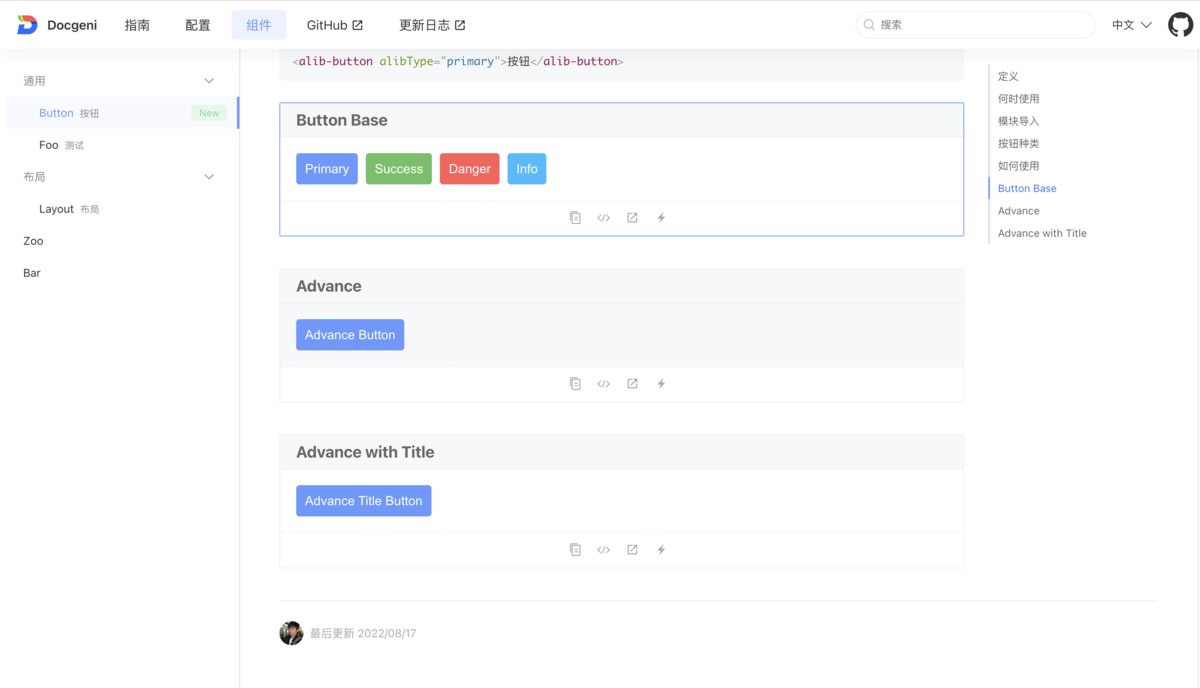
这种方式插入后不仅可以在概览中展示,同时还会在右侧 toc 中展示并快速跳转。
支持根模块自定义 declarations、imports、providers
Docgeni 默认会自动生成站点所有文件,有时候需要在站点根模块导入一个第三方模块,因为 AppModule 是自动生成的,无法实现这样的需求,只能采用自定义站点,但是自定义站点又需要配置很多东西,比较麻烦,所以此次新增了自定义 AppModule 的部分 declarations、imports、providers 元数据,最终会生成一个站点启动的 AppModule 。
在 .docgeni/app 文件夹中新增一个 module.ts ,通过 export default 导出自定义的元数据

最终生成站点的 app.module.ts 如下:

这样在自动生成站点的情况下也可以自定义 declarations、imports、providers。
通过 export default { imports: [...]} 的语法实现模块的自定义除了设置 AppModule 外,前面说的示例模块、以及自定义组件的模块都是可以的,基本 API 都是类似的。
示例支持 background, compact 和 className
在示例中支持了 background, compact 和 className FrontMatter 增强示例渲染的自定义场景。
·background 设置示例的背景色
·compact 设置示例为紧凑模式,此参数为 true 会去除示例边距
·className 自定义 class 样式类,实现更灵活的控制
最后总结
以上是 Docgeni 2.0 核心的功能点,整个基本围绕 自动化 这个主题,让使用者做更少的事情,其余的事情工具帮你完成,当然除此之外还新增了如下特性:
内置的搜索(之前只支持 algolia 搜索)
示例支持 stackblitz 显示
支持配置 favicon.ico
通过配置生成 sitemap
以及修复一大波缺陷
从 2020 年我们开始使用 Docgeni 重构组件库的文档,目前 60+ 个组件基本重构完毕,大大提升了写组件文档的效率。
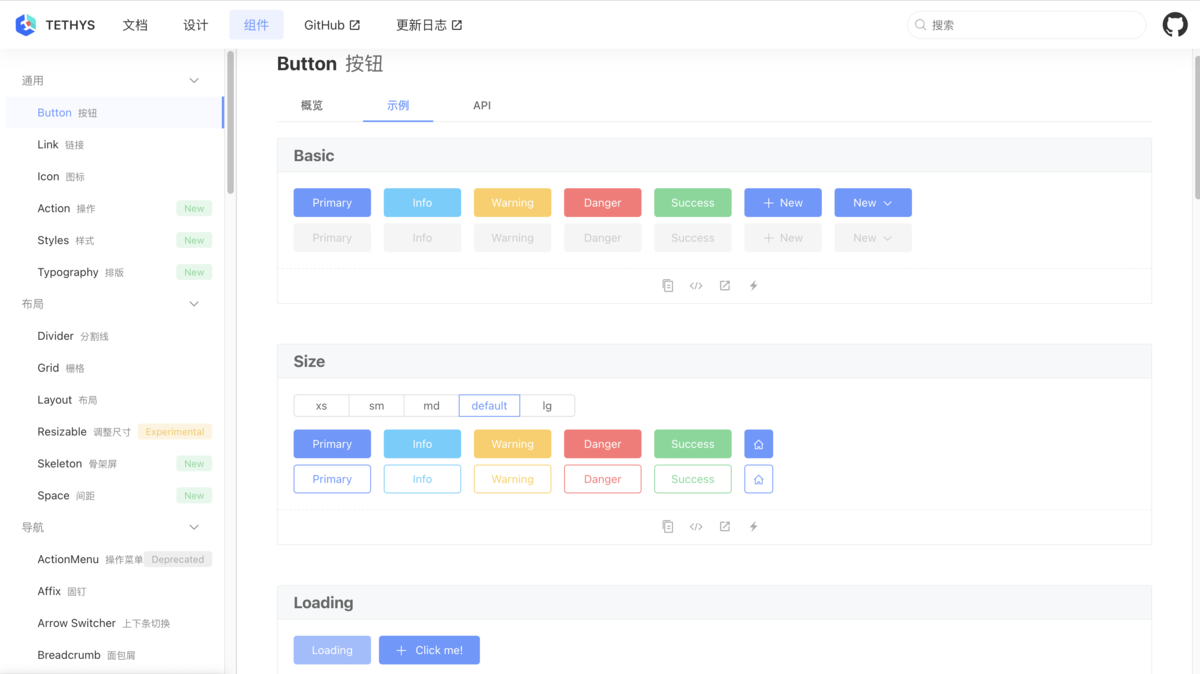
最后最后非常欢迎 Angular 的开发者使用 Docgeni,一款更加自动化的 Angular 组件文档生成工具。
如果喜欢请记得点击 Star https://github.com/docgeni/docgeni
同时也欢迎研发团队使用我们团队开发的智能化研发管理工具 PingCode ,25 人以下 免费使用!25 人以下 免费使用!25 人以下 免费使用!










评论